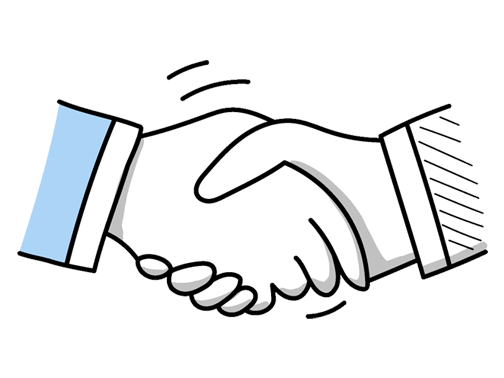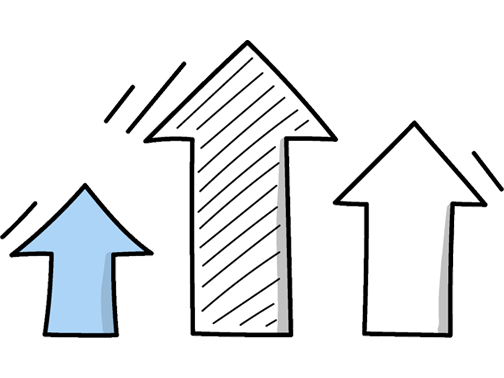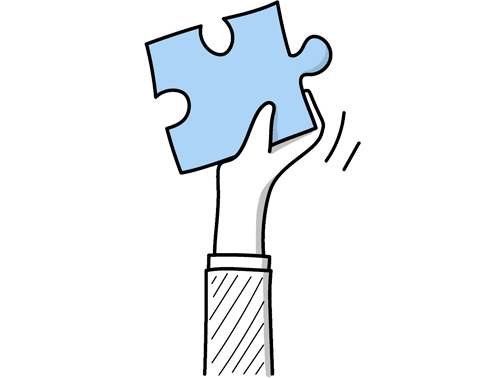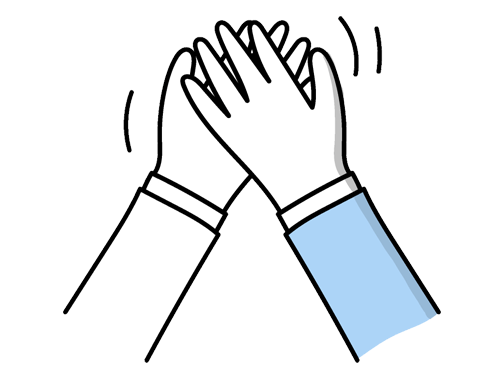Customer Success Manager Interview Questions (2025 Guide)
Find out common Customer Success Manager questions, how to answer, and tips for your next job interview
Practice Interviews Online - Identify your strengths and weakness in a realistic Customer Success Manager mock interview, under 10 minutes
Practice Now »Customer Success Manager Interview Questions
Hiring managers ask this question to see if you can build trust and prevent misunderstandings with customers. You need to say you actively listen, clarify expectations, and use simple, timely communication tailored to the customer's needs.
Example: I focus on listening actively to understand each customer’s needs and tailor my responses accordingly. Keeping communication simple and honest helps build trust, and I check in regularly to avoid misunderstandings. For example, I once set up weekly updates with a client navigating a complex product, which made them feel supported and kept the project on track. It’s about being clear, approachable, and reliable throughout the journey.
Interviewers ask this question to see how you handle sensitive situations and maintain strong customer relationships under pressure. You should explain how you communicated the difficult news clearly and empathetically, offered solutions or alternatives, and stayed professional and positive throughout the conversation.
Example: In a previous role, I had to inform a client about a delay affecting their project timeline. I approached the conversation with honesty and empathy, explaining the reasons clearly while acknowledging their frustration. Then, I offered alternative solutions to minimise the impact and reassured them we were fully committed to delivering quality results. Keeping the tone positive helped maintain trust and confidence throughout the process.
Interviewers ask this to see how you manage difficult relationships and persist in finding solutions. You need to explain that you stay patient, listen carefully to understand the root cause, and adapt your approach while involving the team if needed to improve the customer’s experience.
Example: When a customer remains unhappy despite my efforts, I take a step back to truly listen and understand their core concerns. I try to build trust by being transparent and proactive, often involving them in finding solutions. For example, with one client, changing our approach based on their feedback turned frustration into collaboration, which ultimately strengthened our relationship. It’s about patience and adapting until we find the right fit.
This question helps the interviewer see that you can recognize and respond to different customer needs and personalities effectively. You need to say that you assess each customer's preferences and adjust your tone, language, and communication method to build trust and strong relationships.
Example: I pay close attention to each customer’s style and preferences, whether they’re detail-oriented or prefer a high-level overview. For example, with some clients, I focus on data and specifics, while with others, I keep things conversational and solution-focused. This helps me connect genuinely, build trust, and ensure they feel heard and supported throughout our interactions. Adapting this way has been key to strong, lasting relationships.
What they want to see is how you communicate clearly, understand different viewpoints, and work toward a solution that benefits the team. You should explain that you listen actively to everyone's concerns, stay calm, and guide the team to find common ground through open dialogue and collaboration.
Example: When conflicts arise, I focus on listening carefully to everyone involved to truly understand their viewpoints. I aim to steer the conversation toward shared goals, encouraging the team to collaborate on a solution that works for all. Staying calm and respectful helps keep things productive. For example, in a past role, this approach helped resolve a misunderstanding between departments quickly, improving both communication and results.
This question aims to see how you systematically approach learning so you can effectively support customers. You should say you start by thoroughly studying product documentation and user guides, relate features to common customer needs, and stay updated through ongoing training or webinars.
Example: When I start with a new product, I dive into the essentials—understanding its key features and how it solves real problems for customers. I like to connect the dots between what the product offers and the specific needs of different users. Keeping up with updates is part of the routine; I regularly check release notes and engage with the product team to stay informed and ready to support customers effectively.
Interviewers ask this to see how you stay organized and ensure customer satisfaction across many accounts. You need to explain that you prioritize based on urgency and impact, use tools to track progress, and communicate proactively to manage expectations.
Example: When managing multiple accounts, I focus on understanding each customer's priorities and tailor my approach accordingly. I keep clear communication channels open and use tools to track progress and deadlines. For example, I once balanced several key clients by scheduling regular check-ins, which helped me address issues early and build strong relationships without neglecting anyone. Staying organised and adaptable is key to delivering consistent value.
This interview question aims to assess your teamwork, leadership, and problem-solving skills in a collaborative setting. You need to clearly describe your role and contributions, explain the project’s goal and outcome, and briefly mention how you helped overcome any team challenges.
Example: Sure. In my last role, I led a team to improve customer onboarding, aiming to reduce churn. I coordinated communication between departments and addressed concerns early on, which helped us stay aligned. One challenge was differing priorities, but by fostering open dialogue, we found common ground. The project resulted in a 20% increase in customer retention within three months, which was very rewarding for all of us.
Employers ask this to see how you approach problem-solving and ensure customer satisfaction. You need to explain that you listen carefully, ask clarifying questions, and analyze the situation step-by-step to find the underlying issue.
Example: When a customer has an issue, I start by listening carefully to understand their experience without assumptions. I ask targeted questions to clarify details and identify patterns, then collaborate with relevant teams if needed. For example, once a client’s platform kept crashing; by digging into usage logs and feedback, we pinpointed a software bug and resolved it swiftly, restoring their confidence and satisfaction.
What they want to see is that you listen carefully, clarify the question, and respond honestly without guessing. You should say you confirm understanding by paraphrasing, then commit to promptly finding the correct information and following up with the customer.
Example: When I don’t have an immediate answer, I focus on really understanding the customer’s concern first. Then, I let them know I’ll find the right information promptly and keep them updated along the way. For example, if a customer asked about a new feature I wasn’t familiar with, I’d reassure them I’d check with the team and follow up quickly, so they feel supported and confident we’re on it.
Questions like this assess your ability to connect deep product knowledge with real-world customer outcomes and communication skills. You need to explain how you actively apply your product expertise to solve problems, stay updated through continuous learning, and simplify complex information to ensure customers clearly understand the value.
Example: I focus on understanding the product deeply so I can quickly identify how it solves specific customer challenges. I keep up with updates by regularly engaging with the product team and training materials. When speaking with customers, I break down complex features into simple, relatable terms, often using real-life examples to make sure they see the direct value and feel confident using the product to achieve their goals.
Employers ask this question to see how you maintain lasting customer trust and satisfaction, which is key to retention and growth. You need to say you actively listen to customer needs through regular check-ins, communicate proactively with timely updates, and consistently offer personalized value to enhance their experience.
Example: To build lasting relationships, I focus on really understanding what each customer values and tailoring my approach accordingly. I stay in touch regularly, not just when there’s an issue, to anticipate needs before they arise. For example, updating a client on new features that suit their goals shows I’m invested in their success, which helps keep the connection strong over time.
Employers ask this to see how proactive you are about learning and staying informed, which is crucial for effectively supporting customers. You need to say that you regularly check official product updates, participate in training sessions, and engage with internal teams to stay current.
Example: I make it a point to regularly explore product release notes and attend any update webinars. Engaging with the internal product team also helps me understand upcoming features firsthand. Whenever possible, I use the product myself to experience changes directly, which makes it easier to support and guide customers confidently. For example, in my last role, this approach helped me quickly address user questions after a major update.
What they want to know is how you proactively collect and use customer feedback to enhance your understanding of the product and improve customer outcomes. You need to say that you gather feedback through surveys and interviews, then collaborate with product and training teams to update materials, which leads to better customer satisfaction and retention.
Example: I regularly engage with customers through surveys, calls, and informal chats to understand their experiences and challenges. By analyzing this feedback, I identify common themes and gaps in our product knowledge. Sharing these insights with the team helps us tailor training and resources, ensuring everyone stays informed. This approach not only boosts customer confidence but also strengthens our ability to resolve issues quickly, leading to better overall satisfaction.
This question helps the interviewer understand your problem-solving skills and ability to manage customer challenges effectively. You need to clearly describe the customer's problem, outline the specific steps you took to resolve it, and highlight the positive outcome your actions achieved.
Example: Sure! Here’s a polished response for your interview:
A client once struggled with low user engagement on their platform, affecting retention. I gathered feedback, identified confusing navigation as the key issue, and collaborated with our product team to simplify the interface. After implementing these changes, user satisfaction scores rose noticeably, and retention improved within months, strengthening the client’s confidence and partnership with us.
What they want to know is how you work with different teams to keep customers happy and solve problems together. You should say that you communicate customer needs clearly across teams, align everyone’s goals with customer priorities, and collaborate to overcome challenges through teamwork and compromise.
Example: I work closely with teams like sales, product, and support to keep everyone focused on what the customer needs. By sharing insights and updates regularly, we quickly address issues before they escalate. For example, when a product glitch affected onboarding, I coordinated with product and support to provide timely fixes and clear communication, ensuring the customer’s experience stayed smooth and positive.
What they want to know is how you truly understand and engage with customers to build trust and resolve issues effectively. You need to say that you actively listen by paraphrasing and summarizing their concerns, using non-verbal cues like nodding and eye contact to show engagement, and asking clarifying, open-ended questions to fully grasp their needs.
Example: When I’m talking with a customer, I make sure to really tune in by reflecting back what they say in my own words, which helps confirm I’ve got it right. I also use eye contact and nod to show I’m engaged. If something isn’t clear, I ask thoughtful questions to dig a little deeper. This approach not only builds trust but often uncovers concerns they hadn’t initially mentioned.
Hiring managers ask this question to see how you build unity and ensure everyone works efficiently toward shared objectives. You need to say that you communicate clearly and regularly to set goals, encourage open collaboration among team members, and monitor progress to make adjustments as needed.
Example: To keep everyone moving in the same direction, I make it a point to have regular check-ins where we discuss our goals and any challenges. I encourage team members to share ideas openly, which helps build trust and teamwork. If I notice we’re veering off track, I step in to help refocus priorities. For example, in my last role, this approach helped us boost client satisfaction by 15% within a quarter.
Hiring managers ask this question to see how you approach challenges and find innovative solutions that benefit the customer. In your answer, describe a specific situation where you identified a unique problem and creatively resolved it to improve the customer’s experience.
Example: Sure, there was a time when a client struggled with integrating our software into their existing system. Instead of sticking to the usual troubleshooting steps, I suggested a tailored walkthrough session using their actual data, which helped them see the value more clearly and resolved compatibility issues. It was rewarding to find a unique approach that strengthened their confidence in our product and deepened our partnership.
What they want to know is how you manage difficult emotions and maintain professionalism to resolve issues effectively. You need to say you stay calm, listen actively to understand their concerns, and respond empathetically to build trust and find a solution.
Example: When a customer is upset, I stay calm and listen carefully to understand their concerns. I acknowledge their feelings, showing empathy without rushing to fix things immediately. For example, once a client was frustrated over a delayed delivery; by staying patient and transparent about the next steps, I was able to rebuild trust and turn the situation around. Clear, respectful communication is key to resolving issues and maintaining strong relationships.
What they want to understand is how you logically break down complex problems and remain calm under pressure. You need to say that you methodically gather information, ask clarifying questions, and collaborate with others to identify the root cause before testing potential solutions.
Example: When the solution isn’t obvious, I start by gathering all relevant information to understand the issue fully. I ask questions, listen carefully, and break the problem into smaller parts. If needed, I collaborate with colleagues or consult resources. In a past role, this approach helped me identify a customer’s root issue quickly, resulting in a tailored solution and a satisfied client. Patience and clear communication are key throughout.
This question helps the interviewer see how you handle conflict and maintain strong customer relationships. You need to explain how you listened carefully to the customer's problem, the steps you took to resolve it quickly and effectively, and the positive result that improved the customer's satisfaction.
Example: Certainly. I once dealt with a client frustrated by delayed deliveries. I listened carefully to their concerns, then coordinated with our logistics team to expedite their orders and provided regular updates. This proactive approach not only resolved their issue but restored their trust, leading to a stronger ongoing relationship and positive feedback. It showed me how important clear communication and quick action are in turning things around.
Questions like this assess your ability to truly connect with customers and tailor your approach, which is crucial for long-term success. You should explain that you actively listen by asking targeted questions, adapt solutions based on each customer's unique profile, and maintain regular follow-ups to stay aligned with their evolving needs.
Example: To truly understand each customer, I start by tuning in carefully to what they're saying and asking thoughtful questions to uncover their priorities. I adapt my approach to fit their specific situation, whether they need hands-on support or just occasional check-ins. Staying in regular contact helps me spot any changes early and adjust our solutions, ensuring we always align with what matters most to them.
Questions like this help the interviewer understand how you collaborate and contribute within a team. You need to highlight your typical role—whether you lead, support, or coordinate—and explain how that benefits the team’s success.
Example: In a team, I usually take on the role of a connector—making sure everyone’s ideas are heard and aligned with our goals. For example, in my last project, I helped bridge communication between sales and support, which improved our response times and client satisfaction. I find that fostering collaboration and keeping the team focused helps us deliver the best results together.
This interview question is designed to assess your ability to simplify technical information and communicate clearly with customers who may not have a technical background. You need to demonstrate empathy by breaking down the feature into easy-to-understand terms and focus on how it benefits the customer.
Example: Certainly. When explaining a complex feature, I focus on the customer’s needs and use simple language, avoiding jargon. For example, if it’s a data analytics tool, I might say it’s like having a personal assistant that organizes your information so you can make better decisions quickly. This approach helps the customer feel comfortable and confident, turning complexity into clear value without overwhelming them.
Ace your next Customer Success Manager interview with even more questions and answers
Common Interview Questions To Expect
The interviewer is looking for you to highlight your key skills, abilities, and qualities that make you a strong candidate for the Customer Success Manager role. Be sure to provide specific examples to support your strengths.
Example: My biggest strengths are my excellent communication skills, my ability to build strong relationships with customers, and my problem-solving abilities. For example, in my previous role, I was able to turn around a dissatisfied customer by actively listening to their concerns and finding a solution that met their needs. I believe these strengths will allow me to effectively support and retain customers in this role as a Customer Success Manager.
The interviewer is looking for your long-term career goals, ambition, and commitment to the company. Answers should demonstrate a desire for growth and development within the organization.
Example: In five years, I see myself continuing to grow and excel in my role as a Customer Success Manager. I hope to have taken on more responsibilities and possibly even moved into a leadership position within the company. Ultimately, my goal is to contribute to the success and growth of the organization while further developing my skills and expertise in customer success.
The interviewer is looking for your commitment to ongoing learning and growth in your career. You can answer by discussing courses, certifications, conferences, or mentorship opportunities.
Example: I'm always looking to expand my knowledge and skills in the customer success field. I plan on taking some online courses to stay up-to-date with industry trends and best practices. I also hope to attend relevant conferences and workshops to network and learn from other professionals in the field.
The interviewer is looking for examples of how you prioritize tasks, manage your time effectively, and handle stress in a fast-paced environment. Be prepared to provide specific examples of times when you successfully managed multiple responsibilities simultaneously.
Example: Yes, I am definitely able to handle multiple responsibilities at once. In my previous role as a Customer Success Manager, I was responsible for managing a portfolio of clients, conducting product trainings, and resolving customer issues all at the same time. I prioritize tasks based on urgency and importance, and I always make sure to communicate effectively with my team to ensure everything gets done efficiently.
The interviewer is looking for examples of teamwork, communication skills, problem-solving abilities, and collaboration with others. Answers should highlight specific experiences and achievements in a team setting.
Example: Sure! In my previous role as a Customer Success Manager, I worked closely with cross-functional teams to ensure customer satisfaction and retention. I collaborated with sales, product, and support teams to address customer needs and resolve issues efficiently. Through effective communication and teamwork, we were able to exceed customer expectations and drive business growth.
Company Research Tips
The company's official website is a goldmine of information. Look for details about the company's mission, values, culture, products, and services. Pay special attention to the 'About Us', 'Our Team', and 'News' sections. These can provide insights into the company's history, leadership, and recent developments. Also, check if they have a dedicated page for their customer success team, as this can give you a sense of what your role might involve.
Tip: Look for any recurring themes or keywords on the website. These can give you a sense of the company's priorities and culture, which you can then reflect in your interview answers.
Social media platforms like LinkedIn, Twitter, and Facebook can provide valuable insights into the company's culture and values. Look at the content they share, the tone of their posts, and how they interact with their audience. LinkedIn can also give you information about the company's size, industry, and employee demographics. You can also find information about the company's customer success strategies and initiatives.
Tip: Follow the company on social media platforms to stay updated with their latest news and announcements. Also, look at the profiles of current employees, especially those in customer success roles, to get a sense of what skills and experiences the company values.
Websites like Glassdoor and Indeed can provide reviews from current and former employees, giving you an inside look at the company's culture, management style, and employee satisfaction. Forums like Quora and Reddit can also provide unfiltered opinions and experiences. Be cautious, though, as these are subjective and may not represent the company accurately.
Tip: Look for patterns in the reviews. If multiple people mention the same pros or cons, these are likely to be accurate. Also, pay attention to how the company responds to negative reviews, as this can give you a sense of their approach to feedback and conflict resolution.
Understanding the company's competitors can give you insights into the industry and the company's unique selling points. Look at the competitors' products, services, and customer success strategies. This can help you understand the challenges and opportunities the company is facing.
Tip: Use this information to demonstrate your industry knowledge during the interview and to suggest ways the company could improve its customer success strategies.
What to wear to an Customer Success Manager interview
- Dark-colored business suit
- White or light-colored shirt
- Conservative tie
- Polished dress shoes
- Minimal jewelry
- Neat, professional hairstyle
- Light makeup for women
- Clean, trimmed fingernails
- No strong perfume or cologne
- Carry a briefcase or portfolio





